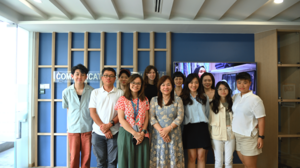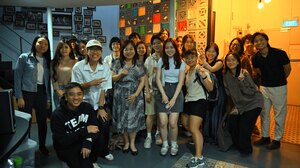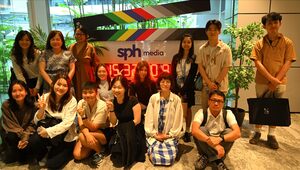





【Article by GCIT】
The Master’s Program in Global Communication and Innovation Technology (GCIT) at National Chengchi University (NCCU) and the Department of Communication and New Media (CNM) at the National University of Singapore (NUS) successfully co-hosted a week-long overseas program titled “Cross-Cultural Media and Innovation Technology: Immersive Learning” from April 1st to 7th. This initiative aimed to nurture media professionals with global perspectives while strengthening the collaborative relationship between the two institutions in media studies and digital innovation. The program was meticulously planned by Distinguished Professor Trisha Lin, Director of GCIT, blending academic theory with hands-on experience to provide students with an intensive international learning opportunity.
The program adopted a three-pronged approach—academic lectures, industry visits, and cultural exploration—offering students an in-depth look at how Singapore’s multicultural environment and national policies shape its media ecosystem.
The first day featured a keynote lecture by Professor Natalie Pang, Head of the NUS CNM, which offered an in-depth analysis of Singapore’s multilingual media policies, digital innovation strategies, and the balance between freedom of expression and national interests. Students then toured the university’s iconic University Town (UTown), experiencing firsthand how interdisciplinary collaboration and integrated learning resources are fostered.
On April 2nd, Dr. Jinna Tay led a workshop exploring how Singapore’s creative industries balance market demands with cultural missions. Students also visited Singapore’s most prominent media organization, SPH Media, and renowned production house Ochre Pictures to observe the practical processes of news editing and content creation.
The itinerary for April 3rd included a visit to the National Library Board of Singapore, where students learned how digital technologies are harnessed to promote cultural preservation and public engagement, showcasing a successful integration of history and technology.
On April 4th, Dr. Soh Kai Ruo used examples such as “Ajoomma” and “Kung Fu Panda 3” to explore how film and television content serve as channels for soft power diplomacy, while also examining the challenges and strategies of international co-production.
At the end of the week, students engaged with local faculty and industry representatives at the Singapore University of Social Sciences (SUSS), the Singapore Film Society, and Infinite Studios, gaining valuable insights into how public-private partnerships and policy support have positioned Singapore as a key hub for international media production.
Director Trisha Lin emphasized that the program enabled students to develop a nuanced understanding of the media ecosystems in both Taiwan and Singapore, while cultivating cross-cultural communication skills, global media literacy, and a practical approach to innovation in the media field. Students not only gained invaluable international experience but also built transnational professional networks that will serve as a strong foundation for their future careers.
Building on this success, GCIT plans to expand its international partnerships and deepen the implementation of immersive learning programs, further integrating academic theory with industry practice. GCIT remains committed to nurturing media professionals with the global competencies needed to thrive in an increasingly interconnected world.
[此中英文稿和圖片以及全球傳播與創新科技碩士學位學程均獲得中華民國文化部的補助。]